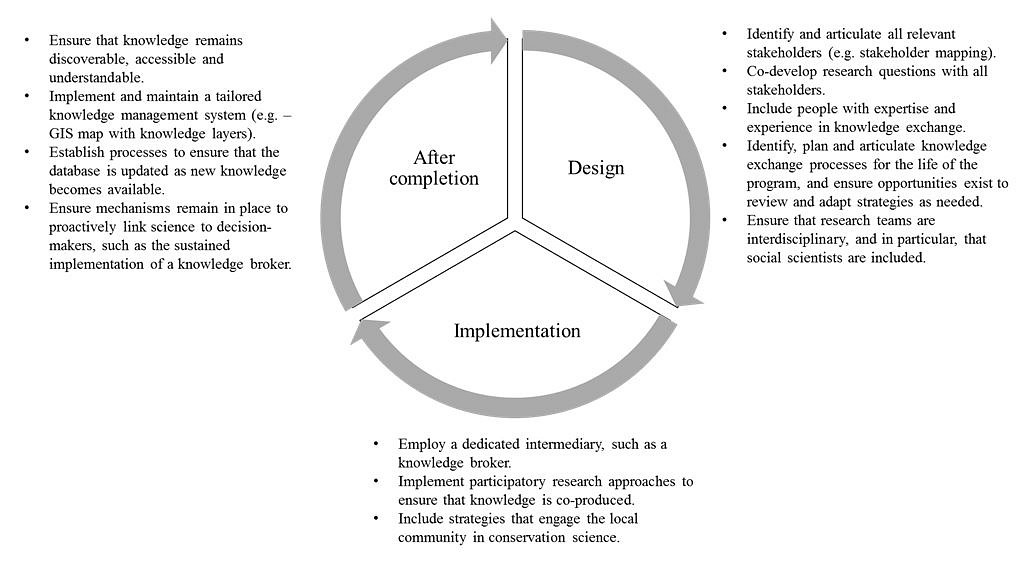9 Research Impact Things
Knowledge exchange
Knowledge exchange is defined by the ESRC as a “ two-way exchange between researchers and research users, to share ideas, research evidence, experiences and skills “ i.e. between academia and outside groups. As research and knowledge bases increase in volume, the ability to translate and use the knowledge by research end-users in ways that are practical become more important and challenging.
Engagement narratives and impact studies from the ARC Engagement and Impact Assessment 2018-19 that received high ratings have strong evidence of knowledge exchange strategy and approach. This includes collaboration with stakeholders and beneficiaries, public participation, development of specialist resources and training programs for external stakeholders and research users, and helping to foster communities.
Getting started
” A river of water from the sea and a river of water from the land mutually engulf each other upon flowing into a common lagoon and becoming one. In coming together, the streams of water mix across the interface of the two currents and foam is created. This foam represents a new kind of knowledge. The forces of the stream combine and lead to a deeper understanding and truth. Essential, Ganma is a place where knowledge is (re)created “- Dr Marika, Lowitja Institute
Consider: How would you exchange knowledge and ideas with your research end-users, stakeholders from industry, policymakers, practitioners, and the general public?
Learn more
Explore the concept of co-creation and consider how knowledge exchange happens between researchers and research end-users.
-
Watch this 1-minute video of Professor Mark Reed discussing the question “What is two way knowledge exchange?”
-
Use the Curtin EI Research Toolkit Engagement Tracker [XLSX, 17kB] to keep track of engagement activities.
-
Read the short information page about co-production by the Autism CRC, and specific examples outlined on the Curtin Autism Research Group introductory page.
-
Read this short explanation: What is citizen science? Have you heard of the projects mentioned in the article? Do you consider citizen science as co-creation, or crowd sourcing data collection? How could knowledge exchange occur in citizen science projects?
-
Check out open data platforms such as the Atlas of Living Australia, where many citizen science projects share their data and allow others to reuse it for education, conservation and land management.
Explore in depth
This section will explore how research can influence policy development and strategy to engage with policymakers.

Key principles in three research phases by C. Cvitanovic et al. CC BY-NC-DD 4.0
-
Read Dr Chris Cvitanovic’s short blog post Knowledge exchange lessons learned from Ningaloo Research Program. The key principles below facilitate knowledge exchange and evidence based decision-making.
-
Explore 10 things to know about how to influence policy with research by the Overseas Development Institute.
Consider: Government employees and policymakers do not have access to subscription journals, so how can you balance reach, prestige and cost when publishing your work? Check out how you can take advantage of the free and legal open access option available via Curtin’s institutional repository espace.